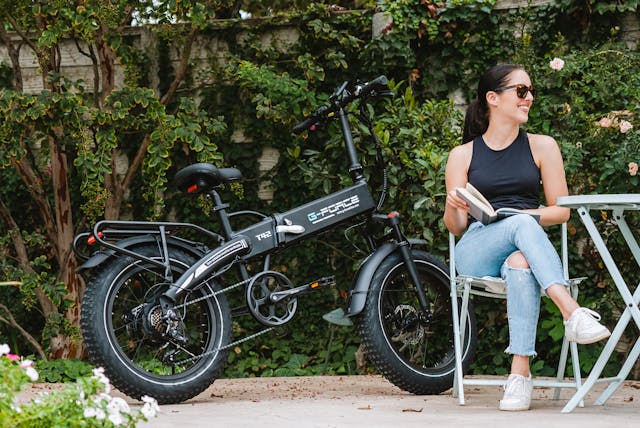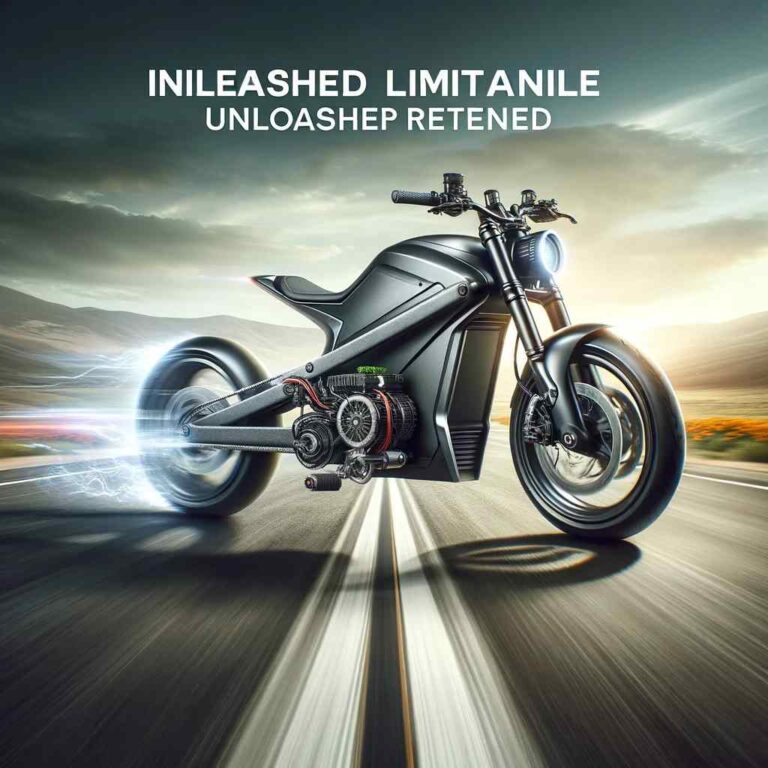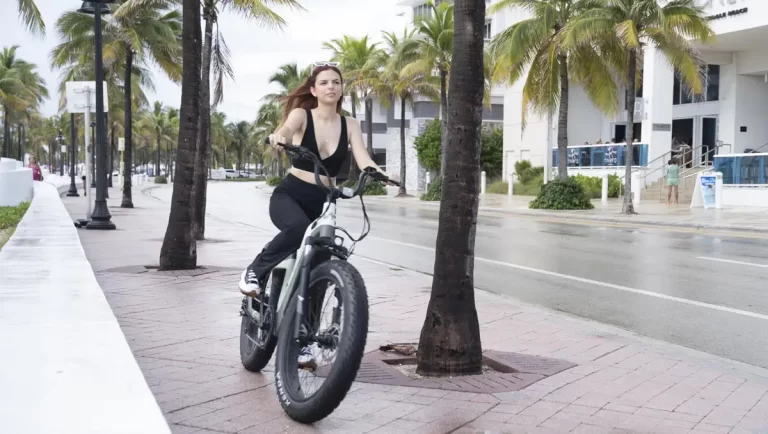Ebike Rules of the Road: Where Can I Ride My Ebike?
Electric bikes, or e-bikes for short, are taking the transportation world by storm. These bicycles come equipped with electric motors that provide a helpful assist, making riding easier on hills, longer distances more manageable, and even opening up cycling to people who might not have considered it before due to fitness concerns.
Sales of e-bikes are booming, and with good reason! They offer a convenient, eco-friendly, and often sweat-free way to get around. However, as e-bikes zoom into our lives, one question pops up frequently: What are the legalities around riding them?
The answer, unfortunately, isn’t always a simple one. E-bike regulations can vary significantly depending on where you live. Here in this blog post, we’ll untangle the web of e-bike legalities, navigate the differences between state and local laws, and explain the classifications (like Class 1, 2, and 3) that can impact how you can ride your e-bike. We’ll also look into important considerations like helmet laws, age restrictions, registration requirements, and even the ever-present question of e-bike insurance. So, whether you’re a seasoned cyclist looking to add an e-bike to your arsenal or a curious newcomer eager to explore this exciting mode of transportation, this guide will equip you with the knowledge you need to ride informed and ride safe!
Key Takeaways
- E-bike regulations vary significantly by state and locality.
- Always check your local laws before riding an e-bike.
- Helmet laws often apply to e-bikes, check your state’s specifics.
- Age restrictions may apply, again, check local regulations.
- Registration and permits might be required in some areas.
- E-bike insurance is not always mandatory, but consider the benefits.
- Ride safely and follow traffic laws for a smooth and legal e-bike experience.
E-bike Legality Fundamentals: Navigating the Maze
Understanding the legal landscape surrounding e-bikes requires a two-pronged approach. First, let’s take a look at the federal baseline established by the Consumer Product Safety Commission (CPSC). The CPSC classifies e-bikes into three categories:
- Class 1 E-bikes: These are the most common type. They offer pedal-assist only, meaning the motor kicks in and provides assistance when you start pedaling, and cuts off when you reach 20 mph or stop pedaling.
- Class 2 E-bikes: These also offer pedal-assist, but they additionally have a throttle mode that allows the motor to propel the bike without pedaling, again with a speed limit of 20 mph.
- Class 3 E-bikes: These are the speed demons of the e-bike world. They offer pedal-assist that can reach speeds up to 28 mph, often with a throttle option as well.
It’s important to note that this CPSC classification system serves as a guideline for manufacturers, not a national law. Here’s where things get interesting: individual states and localities have the authority to set their own e-bike regulations. This means the rules for where you can ride, how fast you can go, and even equipment requirements can vary significantly depending on your zip code.
So, before you hop on your e-bike for a cruise, it’s crucial to familiarize yourself with the specific laws in your area. Here are some key considerations to keep in mind:
- Helmet Laws: Many states have helmet laws that apply to e-bikes, but not all. Resources like the National Conference of State Legislatures (https://biketrainerarena.com/bicycle-helmet-laws-by-us-states/) can help you find the specific helmet laws in your state.
- Age Restrictions: The minimum age to ride an e-bike can also vary. While there’s no federal minimum, some states might require riders to be 16 or older. It’s always best to check your local DMV website or contact your local law enforcement for the most up-to-date information.
- Registration and Permit Requirements: In most cases, you won’t need to register your e-bike or obtain a special permit. However, there are a few exceptions. Some states might require registration for Class 3 e-bikes, so checking your local Department of Motor Vehicles (DMV) website is a safe bet.
- Insurance: E-bike insurance is not generally mandatory, but it can be a wise investment depending on your situation. E-bikes can be expensive, and in the case of an accident, having insurance could provide valuable protection. It’s best to consult with an insurance provider to discuss your options and determine if e-bike insurance is right for you.
By familiarizing yourself with these key considerations and taking the time to research your local regulations, you can ensure a smooth, legal, and most importantly, safe e-bike riding experience.
RELATED CONTENT – Do You Need a License to Ride an Electric Bike?
Ebike Classifications – Ebike Rules
E-bikes might seem straightforward, but the details around Class differences, local regulations, and how you use your e-bike can add layers of complexity. Let’s look deeper into some specific scenarios:
E-bike Class Specific:
Remember the CPSC classification system with Class 1, 2, and 3? Here’s a quick refresher and how it might impact your ride:
- Class 1 E-bikes: These are generally treated like regular bicycles in most areas. They can be ridden on bike paths, streets (obeying traffic laws of course!), and typically don’t require registration or permits. Their lower speed limit (20 mph) often aligns with speed restrictions on bike paths and slower roads.
- Class 2 E-bikes: With their throttle option, Class 2 e-bikes might have some restrictions on where they can be used. Some areas might limit them to streets only, or exclude them from certain bike paths designated for pedal-powered bicycles only. Always check local signage for specific regulations.
- Class 3 E-bikes: These speedier e-bikes might be subject to more regulations due to their higher assisted speeds (up to 28 mph). Some states might classify them as mopeds, requiring registration, permits, or even a driver’s license. It’s crucial to research Class 3 e-bike regulations in your area before hitting the road.
Location Specific:
As mentioned earlier, state and local governments have the power to set their own e-bike regulations. Here’s how to find the information you need:
- Government Websites: Your state’s Department of Motor Vehicles (DMV) website is a goldmine of information on e-bike regulations, including registration requirements, age restrictions, and helmet laws.
- Local Law Enforcement: Don’t hesitate to contact your local police department or transportation authority. They can provide specific details on e-bike rules in your city or county.
- Advocacy Groups: Organizations like the League of American Bicyclists (https://bikeleague.org/) or PeopleForBikes (https://www.peopleforbikes.org/) are great resources for staying up-to-date on e-bike legislation and finding local advocacy groups in your area.
E-bikes Beyond the Basics: Modifying, Public Transit, & Riding with Children
E-bikes offer a lot of versatility, but there are a few things to consider when it comes to specific activities:
- Modifying Ebikes: While tinkering with your e-bike can be tempting, be aware that modifying the motor or exceeding the speed limit can take your e-bike outside its legal classification. This could result in fines or even having your e-bike impounded. It’s always best to consult the manufacturer or a qualified mechanic before making any modifications.
- Using E-bikes on Public Transportation: Taking your e-bike on public transport can be a convenient way to extend your range. However, individual bus or train systems might have specific rules about e-bikes. Always check with the provider beforehand to see if they allow e-bikes onboard, and inquire about any size or storage requirements.
- Riding with Children: E-bikes can be a fun way to explore with your kids, but safety is paramount. Make sure your child wears a properly fitted helmet, and consider their age and maturity level before letting them ride on their own e-bike. Some states might have age restrictions for operating e-bikes, so be sure to check your local laws.
By understanding these specific scenarios and tailoring your riding habits accordingly, you can ensure a safe and enjoyable e-bike experience wherever your adventures take you.
Safety and Additional Considerations: Keeping Your Ride Smooth
Safety should always be your top priority when riding an e-bike. Here are some key points to remember:
- Gear Up: A properly fitted helmet is essential, and consider wearing additional protective gear like elbow and knee pads for added peace of mind.
- Light Up: Be visible, especially during low-light conditions. Equip your e-bike with a front headlight and a rear taillight, and consider reflective gear for yourself and your bike.
- Follow the Rules: Just like with regular bikes, e-bikes are subject to traffic laws. Obey speed limits, use hand signals, and share the road responsibly.
- Know Your Limits: E-bikes can give you a little extra oomph, but don’t push it. Be mindful of your surroundings, adjust your speed for road conditions, and avoid riding under the influence of alcohol or drugs.
RELATED CONTENT – Can You Ride an Electric Bike in the Rain?
E-bike Accidents and Liability:
While e-bikes are a great way to get around, accidents can happen. Understanding the potential legal implications is important. In the case of an accident, liability will depend on the specific circumstances. If you’re riding your e-bike and following the rules, you’re less likely to be held responsible. However, having e-bike specific insurance can offer valuable protection in case of an accident, whether you’re at fault or not.
E-bike Insurance:
E-bike insurance is not typically mandatory, but it’s an investment worth considering. E-bikes can be expensive to replace, and in the event of an accident, e-bike insurance can help cover:
- Medical expenses: If you’re injured in an accident, e-bike insurance can help cover medical bills.
- Liability coverage: In case you cause an accident and injure someone else, e-bike insurance can help cover their medical expenses and other damages.
- Theft and vandalism: Just like a car, your e-bike can be stolen or vandalized. E-bike insurance can help you recoup your losses in such cases.
While e-bike insurance might seem like an extra cost, the peace of mind it offers can be invaluable. Talk to your insurance provider to see if they offer e-bike specific coverage or if your existing homeowner’s or renter’s insurance can be extended to cover your e-bike.
FAQs
When it comes to safety equipment for riding e-bikes, requirements may vary depending on local regulations. However, common safety gear typically includes a properly fitted helmet, which is essential for protecting the rider’s head in the event of a fall or collision. Additionally, riders are encouraged to wear reflective clothing to increase visibility, especially when riding at night or in low-light conditions.
Yes, there are often speed limits imposed on e-bikes, although these limits can vary depending on the jurisdiction. In many places, e-bikes are restricted to a maximum speed of around 20-28 mph (32-45 km/h). However, it’s crucial for riders to familiarize themselves with the specific speed limits outlined in local e-bike regulations to ensure compliance and safety.
In most cases, e-bikes are permitted on bike lanes, as they are considered bicycles rather than motor vehicles. However, it’s essential to verify local regulations, as some jurisdictions may have specific rules regarding e-bike usage on bike lanes. Additionally, riders should always yield to pedestrians and follow all traffic signs and signals when using bike lanes.
Age restrictions for riding e-bikes vary depending on the jurisdiction and the classification of the e-bike. In many places, individuals under a certain age may be prohibited from operating e-bikes, while others may require younger riders to be supervised by an adult. It’s crucial for riders to consult local e-bike laws to determine any age restrictions that may apply.
The requirement for a permit to ride an e-bike depends on the jurisdiction. In some areas, e-bike riders may need to obtain a permit or license, especially for certain classes of e-bikes. However, in many places, no permit is required for riding standard e-bikes. Riders should check local regulations to determine if a permit is necessary in their area.
The permissibility of e-bikes on hiking trails varies widely depending on the specific trail and local regulations. Some hiking trails may allow e-bikes, while others may restrict their usage to preserve the natural environment or ensure the safety of other trail users. Riders should always check with trail authorities or signage to determine if e-bikes are permitted on a particular trail.
Penalties for riding an e-bike illegally can include fines, confiscation of the e-bike, and even legal repercussions in some cases. Common violations may include riding without proper safety equipment, exceeding speed limits, or riding in restricted areas. It’s essential for riders to familiarize themselves with local e-bike laws and regulations to avoid penalties and ensure a safe riding experience.
Modifying an e-bike to increase its speed is generally not recommended and may be illegal in many jurisdictions. Altering the speed capabilities of an e-bike can compromise safety and may violate local regulations. Riders should always use e-bikes as intended by the manufacturer and refrain from making unauthorized modifications that could pose risks to themselves and others.
Parking regulations for e-bikes vary depending on the location. In urban areas, e-bikes are typically subject to the same parking rules as bicycles, meaning they can be parked in designated bike racks or other permitted areas. However, some places may have specific regulations regarding e-bike parking, such as prohibiting parking on sidewalks or in certain zones. Riders should observe local parking signage and regulations to avoid fines or penalties.
E-bike laws can indeed differ between cities and rural areas, primarily due to varying infrastructure, population density, and local priorities. While many overarching regulations may apply uniformly across regions, specific rules, such as speed limits, bike lane usage, and permit requirements, may be tailored to meet the unique needs of urban or rural environments. Riders should be aware of these distinctions and familiarize themselves with both city and rural e-bike laws to ensure compliance and safety wherever they ride.
Conclusion
E-bikes are a fantastic way to get around, offering a fun, eco-friendly, and convenient transportation option. However, with the growing popularity of e-bikes comes the need to understand the legalities surrounding their use. As we’ve explored in this post, e-bike regulations can vary significantly by state and locality.
Being informed about the laws in your area is crucial for a smooth and legal e-bike riding experience. By familiarizing yourself with e-bike classifications, local helmet laws, age restrictions, and any registration or permit requirements, you can avoid any unwanted encounters with the authorities.
But legal compliance is just one piece of the puzzle. Responsible and safe riding practices are paramount. Always wear a properly fitted helmet, use lights during low-light conditions, and follow traffic laws just like you would with a regular bike. Remember, sharing the road and being mindful of your surroundings are key to a safe and enjoyable ride for everyone.
So, the next time you hop on your e-bike, do so with confidence! By following the tips and information in this post, you’ll be equipped to navigate the legal landscape and embrace the joy of e-bike riding.
We encourage you to leave a comment below and share your e-bike experiences! Are there any specific e-bike legality questions you have? Do you have any tips for safe and responsible e-bike riding? Let’s get the conversation rolling!
Together, we can create a safe and enjoyable e-bike riding experience for everyone. Happy riding!
External Sources
https://www.federalregister.gov/documents/2020/11/02/2020-22129/general-provisions-electric-bicycles
https://ebikes.org/ebike-classes-state-laws/
Kristina Grant is not just an enthusiast but a true authority on electric bikes. Nestled in the coastal beauty of Virginia, Kristina has found the perfect backdrop for her passion for electric biking. As a dedicated wife and homeschooling mom, her life revolves around family, faith, and the thrill of adventure.
Originally hailing from Ohio, Kristina's journey with electric bikes began as a curiosity and quickly evolved into a deep expertise. Her blog is a testament to her love for electric biking, combining her fascination for eco-friendly transportation with her coastal lifestyle.
When she's not cruising the beach on her electric bike, you'll find Kristina indulging in her other loves: long walks along the shore, getting lost in a good book, and cherishing moments with her loved ones. With a heart as big as her love for animals, especially cats, Kristina brings a unique perspective to the electric bike world, grounded in her strong faith in God and her dedication to a sustainable lifestyle.
Through her blog, Kristina shares her extensive knowledge of electric bikes, offering valuable insights, tips, and recommendations to fellow enthusiasts. Whether you're a seasoned rider or a newcomer to the electric bike scene, Kristina's blog is your go-to source for all things electric biking, fueled by her passion, expertise, and the scenic beauty of coastal Virginia.







